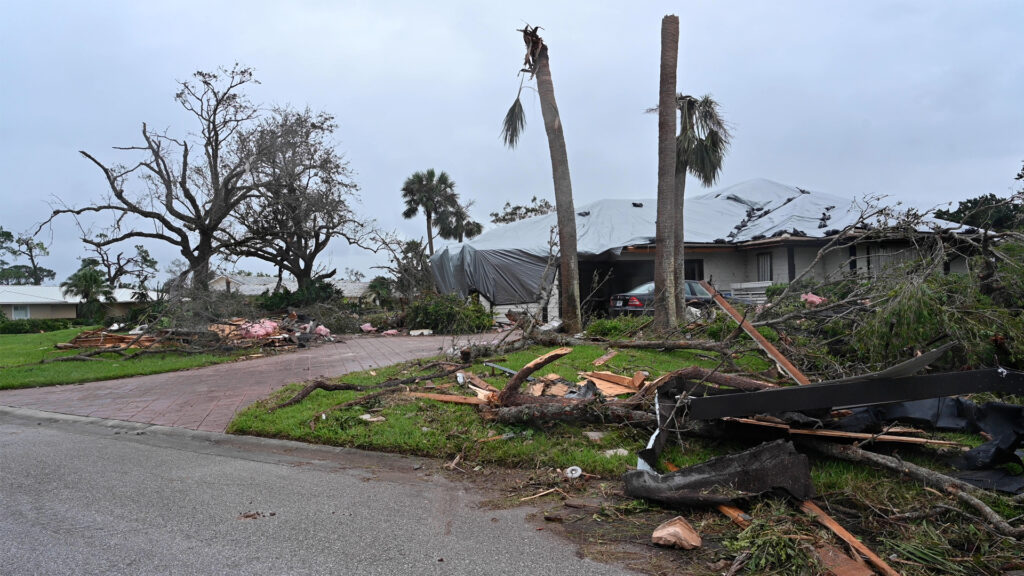By Robert F. Sanchez, Right to the Point
With Hurricane Milton’s impact atop the damage and debris Hurricane Helene left behind, weary Floridians can be forgiven if they’re beginning to experience DFS: Disaster Fatigue Syndrome.
Granted, when residents of the hardest-hit areas return home after prudently heeding the advice to evacuate, they may have valid reasons be discouraged by what they find. They may also be frustrated later when seeking reimbursement for their losses, only some of which can be measured in dollars and cents.
Yet there are reasons to hope that this resilient state will fully recover, as it did after Hurricane Andrew laid waste to the Homestead area in 1992 and after a spate of storms in 2004 and 2005 caused even more damage elsewhere in the state.

After Hurricane Andrew, for instance, local leaders organized a recovery effort dubbed “We Will Rebuild” and named former Miami Herald President Alvah Chapman to chair its board of directors. We Will Rebuild successfully coordinated the activities of the 29 different committees assigned to handle specific tasks.
They had sympathetic supporters in Tallahassee. Gov. Lawton Chiles tasked Lt. Gov. Kenneth “Buddy” MacKay to oversee the state’s role in the recovery effort, and three of the Florida Cabinet’s six members — Attorney General Bob Butterworth, Comptroller Gerald Lewis and Insurance Commissioner Tom Gallagher — were South Floridians.
As property insurance money poured into the area, purchases made in connection with rebuilding effort led to a spike in sales tax revenue. It was beyond what the state budget required, so the excess funds were allocated to the recovery effort.
This set a precedent for the recovery efforts in 2004 and 2005. By then two of the state’s top leaders were from Miami and thus were familiar with what happened after Andrew. One was Gov. Jeb Bush. The other, state Rep. Marco Rubio, chaired the House’s powerful Procedures & Policy Committee and was in line to become the next House speaker in 2006, helping to ensure the recovery effort’s continued success.
It remains to be seen whether Floridians will learn a valuable lesson from the scale of these natural disasters or continue the mistake of building too much too close to the water.
Meanwhile, what Floridians in the impacted areas cannot expect is a prolonged continuation of the nation’s attention and sympathy. As with natural disasters elsewhere and the ongoing horrors in war zones, Florida’s misery will briefly be captured on video, but attention will move on to the next disaster.

This phenomenon was never better described than by poet W.H. Auden in his poem “Musee des Beaux Arts.” It was inspired by viewing artist Pieter Bruegel’s painting depicting the fall of Icarus, in Greek mythology the boy who made wings of wax and flew too close to the sun. As Auden wrote:
“About suffering they were never wrong, the old Masters: how well they understood Its human position: how it takes place while someone else is eating or opening a window or just walking dully along…
“In Bruegel’s Icarus, for instance, how everything turns away quite leisurely from the disaster. The ploughman may have heard the splash, the forsaken cry, but for him it was not an important failure. The sun shone as it had to on the white legs disappearing into the green water, and the expensive delicate ship that must have seen something amazing, a boy falling out of the sky, had somewhere to get to and sailed calmly on.”
Robert F. Sanchez, of Tallahassee, is a former member of the Miami Herald Editorial Board. He writes for the Herald’s conservative opinion newsletter (miamiherald.com/righttothepoint). This opinion piece was originally published by the Miami Herald, which is a media partner of The Invading Sea.
If you are interested in submitting an opinion piece to The Invading Sea, email Editor Nathan Crabbe at ncrabbe@fau.edu. Sign up for The Invading Sea newsletter by visiting here. Banner image: U.S. soldiers from the Florida and South Carolina National Guard search for residents in need of assistance near Stuart on Oct. 10. Areas of the city were decimated by tornadoes spawned by Hurricane Milton as the storm progressed across Florida. (U.S. Air National Guard photo by Tech Sgt. Chelsea Smith, via Defense Visual Information Distribution Service).



